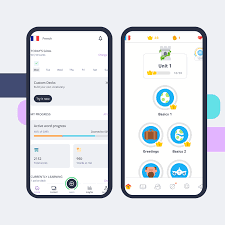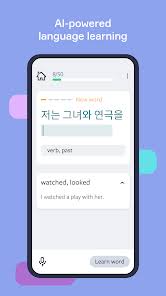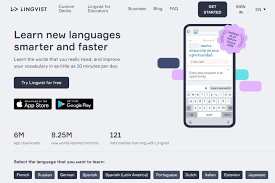Lingvist work
In the ever-growing world of language learning apps, two platforms often come up in discussions: Lingvist and Babbel. Both aim to help users master new languages, but they take different approaches. This article explores the features of Lingvist, compares Babbel vs. Lingvist, and answers the question, “Does Lingvist work?” for those looking to build a vocabulary.

Lingvist is a language learning app designed to accelerate vocabulary acquisition through spaced repetition and contextual learning. Founded in 2013 by physicist Mait Müntel, it uses artificial intelligence to tailor lessons to each user’s skill level. The app focuses on teaching the most frequently used words in a language, claiming that learning the top can help users understand nearly 50% of everyday texts. Lingvist currently offers courses in seven languages, including Spanish, French, German, and Russian, with options for both European and Latin American Spanish.
The core of Lingvist’s method is its flashcard system. Users are presented with sentences containing a blank space where a word is missing, and they must type the correct word. This approach emphasizes learning vocabulary in context rather than memorizing isolated words. The app also includes features like custom decks, where users can create personalized flashcards from texts or specific topics, and a grammar section with basic explanations.
Babbel: A Comprehensive Language Learning Tool
Babbel, a well-established name in language learning, offers courses in 14 languages, including Spanish, French, Italian, and Russian. Unlike Lingvist, Babbel provides a more comprehensive curriculum that covers reading, writing, listening, and speaking. Its lessons, which last 10-15 minutes, focus on practical phrases and conversational skills, making it ideal for learners who want to use their new language in real-world scenarios, such as ordering food or booking a hotel.
Babbel’s strength lies in its structured courses, which include grammar explanations, pronunciation exercises, and cultural insights. The app uses a mix of fill-in-the-blank exercises, spelling tasks, and dialogue-based activities to reinforce learning. While Babbel also employs spaced repetition, its approach is less focused on rapid vocabulary acquisition compared to Lingvist and more on building a well-rounded language foundation.
Babbel vs Lingvist: Key Differences
When comparing Babbel vs Lingvist, the choice depends on your learning goals and preferences. Here are the main differences:
1. Learning Focus
- Lingvist prioritizes vocabulary building, teaching the most common words first to maximize comprehension quickly. Its flashcard-based system is ideal for learners who want to expand their word bank efficiently, targeting milestones like learning.
- Babbel offers a broader approach, integrating vocabulary with grammar, pronunciation, and conversational practice. It’s better suited for learners who want a holistic language education and practical speaking skills.
2. Teaching Method
- Lingvist uses AI-driven spaced repetition to adapt to your progress, repeating words you struggle with more frequently. Its contextual sentences help users understand how words are used naturally, but it lacks in-depth grammar instruction.
- Babbel’s lessons are more structured, with clear grammar explanations and varied exercises. It’s less adaptive than Lingvist but provides a guided path through beginner, intermediate, and advanced levels.

3. Content and Features
- Lingvist offers fewer languages (seven) and a simpler interface, focusing on flashcards, custom decks, and basic grammar tips. Its “Challenges” section provides quizzes for speaking, reading, and writing, but these are limited compared to Babbel’s offerings.
- Babbel includes podcasts, games, and live online classes (at an additional cost), making it more engaging for users who need variety. Its cultural insights and regional variations add depth to the learning experience.
4. Pricing
- Lingvist is more affordable, with subscriptions starting at $4.99 per month or $39.99 per year. Its 14-day free trial allows users to test the app thoroughly.
- Babbel is pricier, with plans starting at $14.49 per month or $89 annually. Its free trial is limited to one lesson per language, which may not be enough to evaluate its full potential.
5. User Experience
- Lingvist has a clean, minimalist design that’s easy to navigate, appealing to users who prefer a distraction-free experience. However, its repetitive flashcard format can feel monotonous over time.
- Babbel’s interface is functional but less modern, and its lack of heavy gamification may not motivate users who thrive on rewards and streaks, like those found in Duolingo.
Does Lingvist Work?
The question “Does Lingvist work?” depends on what you’re trying to achieve. If your goal is to rapidly build vocabulary—say, learning 1000 words in a short period—Lingvist is highly effective. Its spaced repetition algorithm ensures you retain words by revisiting them at optimal intervals. A 2017 study cited by Lingvist claimed that learners could master in about 20 hours, though this may vary based on prior language experience and study consistency.
User reviews support Lingvist’s efficacy for vocabulary acquisition. For example, a C1-level Spanish learner found the app’s progress tracking motivating, helping them reinforce and expand their vocabulary. However, Lingvist falls short for learners seeking comprehensive language skills. Its grammar explanations are minimal, and it lacks robust speaking or listening practice, which are critical for fluency.
Compared to Babbel, Lingvist is less versatile but more focused. If you’re a beginner or intermediate learner aiming to understand texts or hold basic conversations, Lingvist can get you there faster for vocabulary. But for speaking confidently or mastering grammar, Babbel or supplementary resources are necessary.

Can You Learn with Lingvist?
Reaching a milestone is a realistic goal with Lingvist, given its focus on high-frequency vocabulary. The app claims that learning the 500 most common words allows you to understand nearly 50% of standard texts, and doubling that to covers about 80% of everyday scenarios. By completing 50 flashcards daily, as recommended, users can learn 20-30 words per day, potentially hitting in 33-50 days with 20 minutes of daily practice.
Babbel can also help you learn, but its broader curriculum means vocabulary acquisition is slower. You’ll learn words alongside grammar and phrases, which is valuable for practical use but less efficient for hitting a specific word count quickly.
Which App Should You Choose?
Choose Lingvist if:
- You want to rapidly expand your vocabulary, aiming for milestones.
- You prefer a minimalist, focused app with AI-driven personalization.
- You’re on a budget and want an affordable subscription.
Choose Babbel if:
- You want a comprehensive language education, including grammar, speaking, and cultural insights.
- You’re a beginner or intermediate learner who values structured lessons.
- You’re willing to invest more for a well-rounded experience.
Conclusion
Both Lingvist and Babbel are powerful tools for language learning, but they cater to different needs. Lingvist excels at building vocabulary quickly, making it a great choice for learners targeting one or more. Its AI-driven approach and affordable pricing make it appealing, though it lacks depth in grammar and speaking. Babbel offers a more complete curriculum, ideal for those who want to speak confidently in real-world situations, but it’s pricier and less focused on rapid word acquisition.